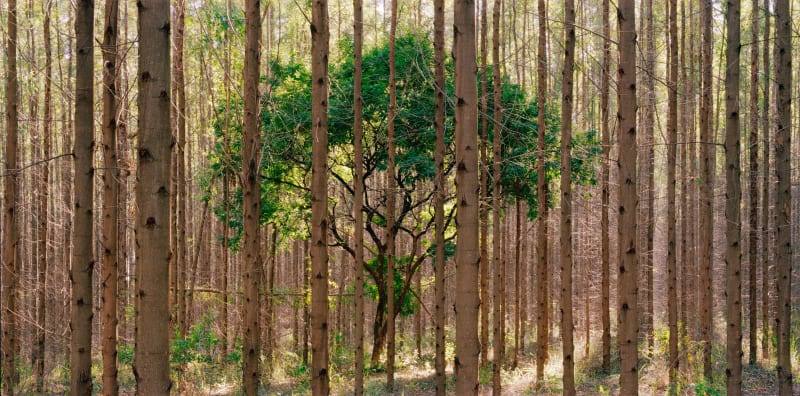Excerpt from the text Entroncamento
Pedro David didn't need the pandemic to look at nearby things, the small objects with which we cohabit the spaces of our homes. His artistic trajectory is permeated by the closeness of this coexistence, the understanding of his relationship with the environment, the common rhythm between his breathing and the breathing of the house. The vision of the intimacy of this relationship was evident in his first images, for example, in the photograph entitled Kitchen (Série Rota Raiz, 2002-2012), starring stacked agate plates, a collection of crumpled aluminum pans, with dirt-colored stains from under the nails, cutlery assembled erect like a troop, in short, a set of old things with edges frayed with spots of rust, the metal body reacting to time, arranged partly on a table, partly hanging on the wall like a worn-out clothesline , poignant testimony to the interdependence between us and things.
Because we are breaking this pact. With the Madeira de Lei series, Pedro David brought a succession of records -Suffocation-: trees left to die amidst murderous eucalyptus plantations, some still resisting with their green tops, others already dead, gray trunks, calcined skeletons, evidenced in the later series, Bones, composed of bronze sculptures, cast from these remains, found at the foot of the cerrado.
Interest in nature generated all kinds of connections. And qualifying his recent production, as the installment chosen for this exhibition, does not account for the breadth of his action. It will be more accurate to designate it as an impression. As? The Fotograma Esqueleto series, for example, consists of harvesting dried leaves, dehydrated to the point where their structures are reduced. Nothing was left of the limbs, the laminar regions, green with chlorophyll. Torn from the bodies of trees or shrubs, cycles ended, all that remains are the petioles, the conducting vessels and the lines that finish off the edges, all dried up like a stained glass window stripped of its colored pieces, an intricate and light design as if it had been scratched in the air. Before they disappear, pulverized onto the floor, the artist takes them. The delicacy of the material requires care. Place one or more sheets on a sheet of silver photographic paper or x-ray plates. Sheets upon sheets, he lets the light bathe the paper, fixing his bones in black and white or white and black. The Spore Stamp series involves a similar process. Instead of suspending the death march of the leaves, one step before their disappearance, Pedro David collects the spores -the reproductive structures of the mushrooms-, which explode from the inside of their folds, blades and tubes. The paper partially blocks this rain, technically a stamp provided by a single or a group of mushrooms.
In both cases, the refusal of the photographic action as a superficial move, a mere instant isolated from the figure or fact portrayed, is clear. Benjamin, in his Little History of Photography (1931), argued that the extended time spent on a photograph captured the interiority of what was photographed. Pedro David, avoiding contemporary instantaneity, collects and prints fragments of nature, bringing them closer to paintings made on cave walls.
Agnaldo Farias
August 2023

